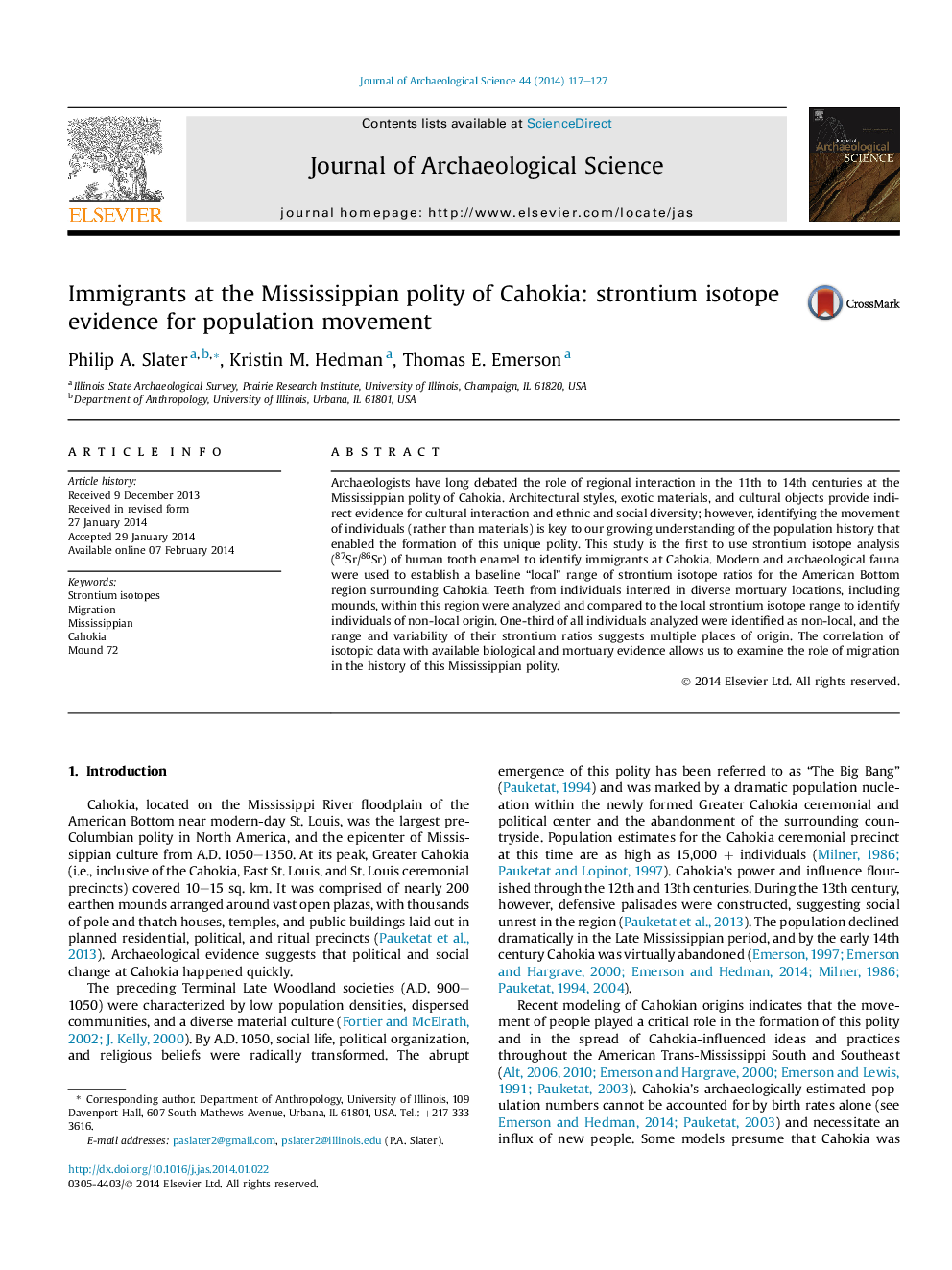| Article ID | Journal | Published Year | Pages | File Type |
|---|---|---|---|---|
| 1035386 | Journal of Archaeological Science | 2014 | 11 Pages |
•This is the first strontium isotope identification of non-local individuals in Cahokia.•Small mammal teeth were used to refine local strontium range for American Bottom.•Strontium isotope ratios suggest people moved into Cahokia from multiple places.•Non-local individuals are identified in both unique and “typical” burial contexts.
Archaeologists have long debated the role of regional interaction in the 11th to 14th centuries at the Mississippian polity of Cahokia. Architectural styles, exotic materials, and cultural objects provide indirect evidence for cultural interaction and ethnic and social diversity; however, identifying the movement of individuals (rather than materials) is key to our growing understanding of the population history that enabled the formation of this unique polity. This study is the first to use strontium isotope analysis (87Sr/86Sr) of human tooth enamel to identify immigrants at Cahokia. Modern and archaeological fauna were used to establish a baseline “local” range of strontium isotope ratios for the American Bottom region surrounding Cahokia. Teeth from individuals interred in diverse mortuary locations, including mounds, within this region were analyzed and compared to the local strontium isotope range to identify individuals of non-local origin. One-third of all individuals analyzed were identified as non-local, and the range and variability of their strontium ratios suggests multiple places of origin. The correlation of isotopic data with available biological and mortuary evidence allows us to examine the role of migration in the history of this Mississippian polity.
